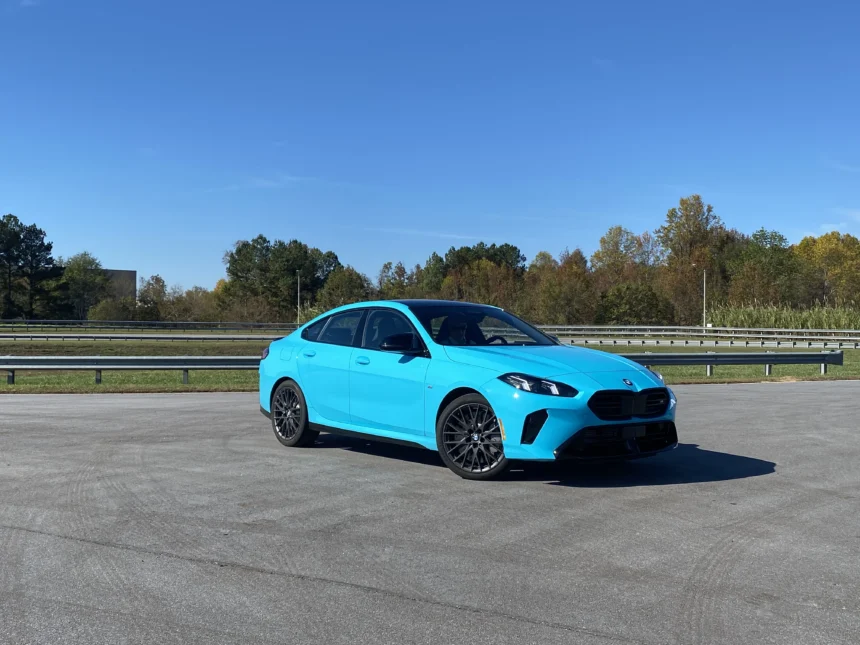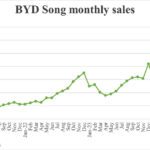The 2025 BMW 2-Series is a versatile vehicle that comes in two different body styles: a compact coupe and a four-door sedan known as the Gran Coupe. These variations attract a diverse range of competitors, including the Audi A3 and the Mercedes-Benz CLA. While the availability of entry-level 2-door coupes is diminishing, the 2-Series stands out for its unique offerings.
For those who appreciate classic design and rear-wheel-drive architecture, the 2-Series coupe is a must-have. With its long-hood, short-trunk proportions, it appeals to enthusiasts seeking a traditional driving experience. On the other hand, the Gran Coupe caters to a different audience, emphasizing comfort and premium practicality over driving personality. The Gran Coupe showcases BMW’s capabilities for newcomers to the brand and offers a more modern driving experience.
In terms of performance and features, the 2025 BMW 2-Series has received a mid-cycle update with fresh interior technology and minor exterior changes. Both models now come equipped with a new 14.9-inch touchscreen and a 12.3-inch digital instrument cluster, providing a modern and user-friendly interface. The coupe model is available in 230i and M240i variants, offering powerful engines and exceptional handling. For those seeking even more performance, the M2 model delivers track-ready handling without sacrificing daily drivability.
On the other hand, the Gran Coupe features updated powertrains with increased horsepower and torque figures. The M235i Gran Coupe stands out with improved performance capabilities, making it a compelling option for those who prioritize power and practicality. Additionally, the Gran Coupe offers a spacious interior with comfortable front seats, although rear-seat passengers may find the space slightly limited.
In terms of safety features, the 2025 BMW 2-Series comes equipped with standard crash-avoidance technology and offers additional features like adaptive cruise control and a surround-view camera system. Pricing for the 230i coupe starts at $40,375, making it an affordable entry point into the BMW lineup. The Gran Coupe variant starts at $42,775 and includes a range of premium features as standard.
Overall, the 2025 BMW 2-Series is a well-rounded vehicle that caters to different preferences and driving styles. Whether you prefer the classic charm of the coupe or the modern practicality of the Gran Coupe, the 2-Series offers a dynamic driving experience with a touch of luxury. Made in Germany, these vehicles uphold BMW’s reputation for quality and performance. The Evolution of E-Commerce: From Brick and Mortar to Click and Order
E-commerce, or electronic commerce, has come a long way since its inception in the early 1990s. What started as a novel concept of buying and selling products online has now become a multi-billion dollar industry that has forever changed the way we shop. The evolution of e-commerce has been marked by several key milestones that have shaped the industry into what it is today.
The first major milestone in the evolution of e-commerce was the emergence of online marketplaces such as eBay and Amazon. These platforms allowed individuals and businesses to sell their products to a global audience, breaking down geographical barriers and expanding the reach of e-commerce. Consumers no longer had to visit physical stores to make a purchase, as they could now browse and buy products from the comfort of their own homes.
As e-commerce continued to grow in popularity, traditional brick-and-mortar retailers began to take notice. Many established retailers started to launch their own e-commerce websites in order to compete with online marketplaces. This marked the beginning of omni-channel retailing, where retailers offered customers the flexibility to shop online or in-store, creating a seamless shopping experience across multiple channels.
The next major milestone in the evolution of e-commerce was the rise of mobile commerce, or m-commerce. With the widespread adoption of smartphones and tablets, consumers were now able to shop on the go, anytime and anywhere. Retailers quickly adapted to this trend by optimizing their websites for mobile devices and developing mobile apps to enhance the shopping experience. Today, mobile commerce accounts for a significant portion of e-commerce sales, with consumers increasingly turning to their smartphones to make purchases.
Another key development in the evolution of e-commerce has been the advent of social commerce. Social media platforms such as Facebook, Instagram, and Pinterest have become powerful tools for retailers to reach and engage with consumers. By integrating shopping features into their social media channels, retailers are able to showcase products, collect customer feedback, and drive sales directly from social media platforms. Social commerce has transformed the way retailers market and sell their products, blurring the lines between social networking and online shopping.
Looking ahead, the future of e-commerce is likely to be shaped by emerging technologies such as artificial intelligence, augmented reality, and virtual reality. These technologies have the potential to revolutionize the online shopping experience by personalizing product recommendations, creating immersive shopping environments, and streamlining the checkout process. As e-commerce continues to evolve, retailers must stay ahead of the curve by embracing new technologies and adapting to changing consumer behaviors.
In conclusion, the evolution of e-commerce has been a remarkable journey that has transformed the way we shop and do business. From the early days of online marketplaces to the current era of mobile and social commerce, e-commerce has continuously evolved to meet the needs and preferences of consumers. As we look towards the future, one thing is certain: e-commerce will continue to innovate and expand, offering new opportunities and challenges for retailers and consumers alike.







